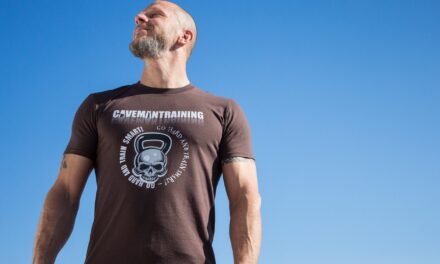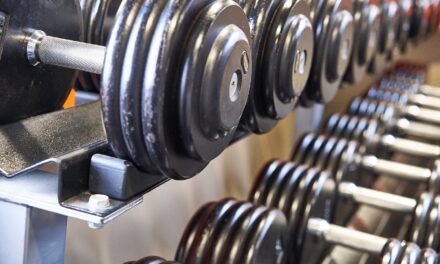As we journey into our 50s and beyond, the narrative around fitness often shifts from aesthetic goals to a focus on longevity, vitality, and the quality of life. This pivotal shift brings functional fitness into the spotlight, a form of exercise specifically designed to support the activities of daily living. Unlike traditional fitness regimes that may prioritize appearance or athletic performance, functional fitness for those over 50 aims to enhance balance, strength, endurance, and flexibility, ensuring that individuals can lead active, independent lives well into their later years.
The concept of functional fitness is grounded in the principle that exercise should mimic and support everyday movements, such as squatting, lifting, bending, and reaching. This approach is particularly beneficial as we age, considering the common physical challenges that come with it, such as decreased muscle mass, reduced bone density, and a higher risk of falls and injuries. By focusing on functional fitness, individuals over 50 can proactively address these issues, promoting a sense of autonomy and preventing the onset of disability.
Moreover, functional fitness transcends the boundaries of physical well-being to impact mental and emotional health positively. Engaging in a fitness routine that emphasizes practical, achievable goals can lead to increased confidence, reduced stress, and a greater sense of achievement. This holistic approach to health is crucial for maintaining not only the body’s physical condition but also for nurturing the mind and spirit.
This article delves into the essence of functional fitness for those over 50, exploring its benefits, key components, and how to integrate it into daily life. Whether you’re looking to refine your current fitness routine or embark on a new journey toward improved health and autonomy, the insights provided here will offer valuable guidance and inspiration. As we navigate the complexities of aging, embracing functional fitness becomes not just a choice but a powerful tool for enhancing our quality of life.
The Pillars of Functional Fitness for a Flourishing Life After 50
Functional fitness is built on several core pillars that address the comprehensive needs of the body as it ages. Understanding these components is essential for creating a balanced workout routine that fosters health, mobility, and independence.
Strength Training: Vital for preserving muscle mass and supporting metabolism, strength training is a cornerstone of functional fitness. Exercises that focus on major muscle groups, using body weight, free weights, or resistance bands, can significantly improve functional strength and reduce the risk of falls.
Cardiovascular Endurance: Regular cardiovascular exercise, such as walking, cycling, or swimming, enhances heart health and stamina. This type of training is crucial for maintaining the endurance needed for daily activities and promoting overall cardiovascular wellness.
Flexibility and Mobility: As flexibility tends to diminish with age, incorporating stretching or yoga into a fitness routine can help maintain joint health, reduce pain, and improve range of motion. This, in turn, supports the ability to perform everyday tasks with ease.
Balance Training: Balance exercises are particularly important for preventing falls, a common concern for individuals over 50. Practices such as tai chi, balance drills, or Pilates can improve stability and proprioception, enhancing safety and confidence in daily movements.
Integrating these pillars into a weekly fitness routine ensures a comprehensive approach to functional fitness, addressing the body’s evolving needs and supporting a high quality of life.
Expert Insights on Incorporating Functional Fitness into Your Lifestyle
Adopting a functional fitness routine after 50 might seem daunting, but it is both accessible and essential for longevity and well-being. Fitness experts and gerontologists alike stress the importance of starting slowly, focusing on form, and gradually increasing intensity and complexity as strength and confidence grow.
Personalization is key. What works for one person may not suit another, especially considering the diverse health backgrounds and physical capabilities of individuals over 50. Consulting with a fitness professional who understands the nuances of aging can provide tailored advice and adaptations, ensuring that your routine is both effective and safe.
Moreover, community plays a significant role in sustaining a functional fitness regimen. Joining classes or groups tailored to older adults can offer motivation, support, and social interaction, enriching the fitness journey and promoting adherence.
Embracing functional fitness after 50 is not just about adding years to your life; it’s about adding life to your years. Through a targeted, balanced approach to exercise, individuals can enhance their physical autonomy, support their mental and emotional health, and enjoy an active, fulfilling lifestyle at any age.
Summary and Practical Takeaways
Functional fitness offers a pathway to improved health, autonomy, and quality of life for individuals over 50. By focusing on the core pillars
of strength, cardiovascular endurance, flexibility, mobility, and balance, you can create a comprehensive fitness routine that supports daily living and well-being.
- Start with an assessment of your current fitness level and health considerations to tailor your approach to functional fitness.
- Incorporate a mix of strength training, cardiovascular exercise, flexibility work, and balance training into your weekly routine.
- Consult with fitness professionals to ensure your routine is safe, effective, and aligned with your health goals.
- Seek out community and support by participating in group classes or activities designed for older adults.
- Remember, consistency is key. Even small, regular increments of exercise can lead to significant improvements in functional fitness and overall health.
As you embark on or continue your journey with functional fitness, remember that the ultimate goal is to enhance your ability to live a vibrant, independent life. With each step, lift, or stretch, you’re not just moving your body; you’re elevating your well-being and paving the way for a healthier, more joyful future.






